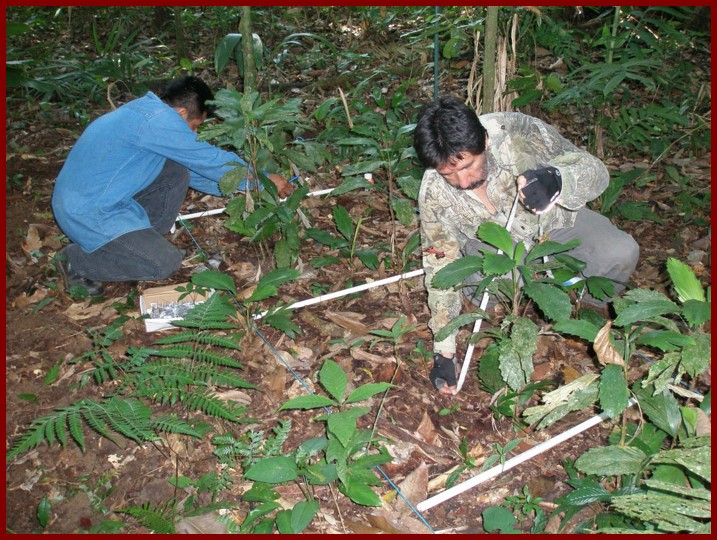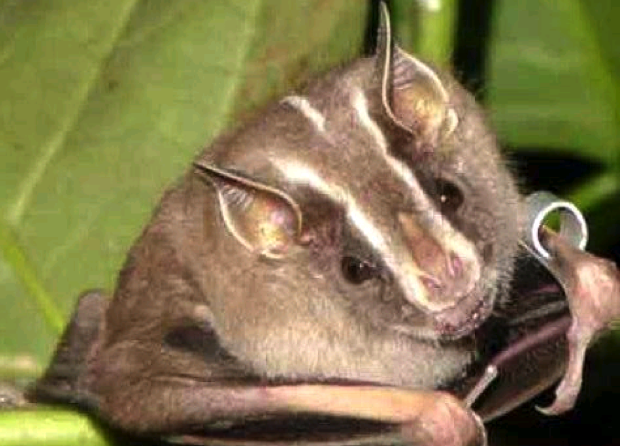Research
Osa-Golfito Initiative in Southern Costa Rica (INOGO)
Research by Rodolfo Dirzo on June 10, 2016
The central question being addressed with this project is: How can we make human well-being and the well-being of the natural environment compatible? One of the main projects in this program (LAPA) is the experimental enrichment of oil palm plantations, via addition of bananas, cacao, and timber trees, to address risks of fungal pathogens, secure… Read more
Linkages between wildlife defaunation, savannah ecosystem structure and composition, and consequences for small mammal abundance in the context of risks for human health
Research by Rodolfo Dirzo on June 10, 2016
This study combines experimental manipulations of wildlife together with “real life” pairwise comparisons (intact vs. defaunated landscapes) in the context of landscape heterogeneity and land use change. As an example of the cascading consequences of defaunation, we found that when large herbivores are experimentally removed, the abundance of rodents increases dramatically, along with the abundance… Read more
Consequences of defaunation on the structure and diversity of the understory in neotropical forests
Research by Rodolfo Dirzo on June 10, 2016
This study compares two tropical rainforest sites in Mexico with contrasting levels of defaunation: Los Tuxtlas (defaunated) and Montes Azules (intact). In addition, we have established exclosure experiments in both sites to look at mammalian herbivory, seed predation and structure and composition of the understory vegetation. Collaborator: Dr. Eduardo Mendoza (Universidad de Michoacán, Mexico) Funding:… Read more Consequences of defaunation on the structure and diversity of the understory in neotropical forests
Ecological consequences of rat eradication on the Palmyra Atoll (Central Pacific)
Research by Rodolfo Dirzo on June 10, 2016
For this project, we are able to draw on extensive and detailed baseline data on the structure, composition, and diversity of the native vegetation and the islets dominated by the invasive coconut palm, as well as information about the food chain length and dynamics and soil, foliage, and runoff nutrients on the Palmyra Atoll in… Read more Ecological consequences of rat eradication on the Palmyra Atoll (Central Pacific)
A new paradigm for the conservation of turtles
Research by Maria Wojakowski on March 11, 2016
Turtles are more highly threatened with extinction than many other vertebrate groups, and numerous species will likely become extinct in the next decades. Failure to conserve the world’s remaining turtle populations is partially due to the ineffectiveness of current conservation strategies. A new paradigm is needed for the conservation of turtles, one which maintains the… Read more
The effects of deforestation on a tropical mutualistic interaction network
Research by Beth M. L. Morrison on March 11, 2016
I have been investigating the effects of gradual habitat change on mutualistic interaction networks using plant-hummingbird interaction data from along a deforestation gradient in a Costa Rican coffee plantation landscape. I am studying changes in the structure of the entire network as well as changes in the feeding behavior of individual hummingbird species. I hope… Read more The effects of deforestation on a tropical mutualistic interaction network
The effects of livestock and land use change on bat communities: structure, composition and changes in functional groups and ecosystem services
Research by Fernando Gonçalves on March 3, 2016
The overall aim of this project is to gain a better understanding of the effects of livestock and land use change on wildlife in Pantanal Wetland, Brazil. For the historically very large properties of the Pantanal, which had a range of native pasture types and low cattle densities, the continuous grazing system was economically and environmentally… Read more The effects of livestock and land use change on bat communities: structure, composition and changes in functional groups and ecosystem services
Investigating drivers of plant-soil feedback strength in tropical tree species
Research by John Schroeder on March 3, 2016
Tropical rainforests support the highest plant diversity in the world. Most of this diversity is comprised of exceedingly rare and seemingly similar tree species. Explaining the mechanisms allowing the coexistence of so many types of trees has therefore been a central focus of ecology for decades. An increasing body of research shows that conspecific negative… Read more Investigating drivers of plant-soil feedback strength in tropical tree species
The effectiveness of recovered riparian forests for the conservation of biodiversity and ecological processes
Research by Yasmine Antonini on March 2, 2016
The overall goal of this project is to gain a better understanding of how recovered riparian forests can enhance biodiversity conservation. In tropical forests, several reforestation programs have been created to recover biological diversity in deforested environments. However, most of these studies have focused on the loss of species and ignored the loss of ecological interactions… Read more The effectiveness of recovered riparian forests for the conservation of biodiversity and ecological processes
Effects of a keystone genus on the prevalence of ectoparasites and disease in a desert rodent community
Research by Jessica Martin on March 2, 2016
I am investigating the effects of removing kangaroo rats (Dipodomys spp.), a keystone genus, on the prevalence of ectoparasites (fleas, ticks, etc.) and pathogens (bacteria of the genus Bartonella) in a desert rodent community. This project is based at a long-term research site (established in 1977) near the town of Portal in southeastern Arizona. I collected… Read more Effects of a keystone genus on the prevalence of ectoparasites and disease in a desert rodent community








